BBVA is extending its interim emission reduction targets for 2030 to two relevant sectors, aviation and shipping, in order to move its client portfolio toward net zero emissions by 2050. These two sectors join the oil and gas, power generation, automotive, steel, cement, and coal sectors, whose emission reduction targets were published by BBVA in 2021 and 2022.

“Aviation and shipping, two critical sectors to economic development and global trade, are heavy in emissions and we seek to accompany them in their energy transition. In order to make their decarbonization a reality, advances and developments in new technologies will be crucial,” said Javier Rodríguez Soler, Head of Sustainability and Corporate & Investment Banking (CIB) at BBVA.
In aviation, BBVA aims to reduce the level of emissions in its financing portfolio by 18 percent between 2022 and 2030. In the case of the shipping sector, the bank has set its target to align its ship financing portfolio to the strategy set in 2018 by the International Maritime Organization (IMO) of reducing global emissions by 30 percent between 2008 and 2030.
The decarbonization of aviation and shipping: a complex challenge
Achieving the decarbonization commitments for the aviation and shipping sectors is a complex challenge. For both sectors, growing demand and activity is expected in the coming years. If the emissions of both sectors are not mitigated, they could go from six percent of all greenhouse gases to 35 percent in 2050, according to studies presented by the European Commission¹.
Achieving the decarbonization of the aviation sector requires a wide range of measures and coordinated efforts to boost key technologies, such as sustainable aviation fuel (SAF).
In addition, airlines can reduce their emissions by making investments to improve efficiency in the use of fuel, such as modernizing their fleet with new aircraft featuring new turbines with improved design and aerodynamics.
Starting next decade, disruptive technologies such as electrification and/or hydrogen in propulsion systems will be needed, mainly for short and medium haul flights. The joint efforts of the airports, airlines and service providers will be fundamental to the decarbonization of aviation.
The Alliance for Zero Emission Aviation, created by the European Commission, estimates that there will be 26,000 zero emission aircraft on the market by 2050.
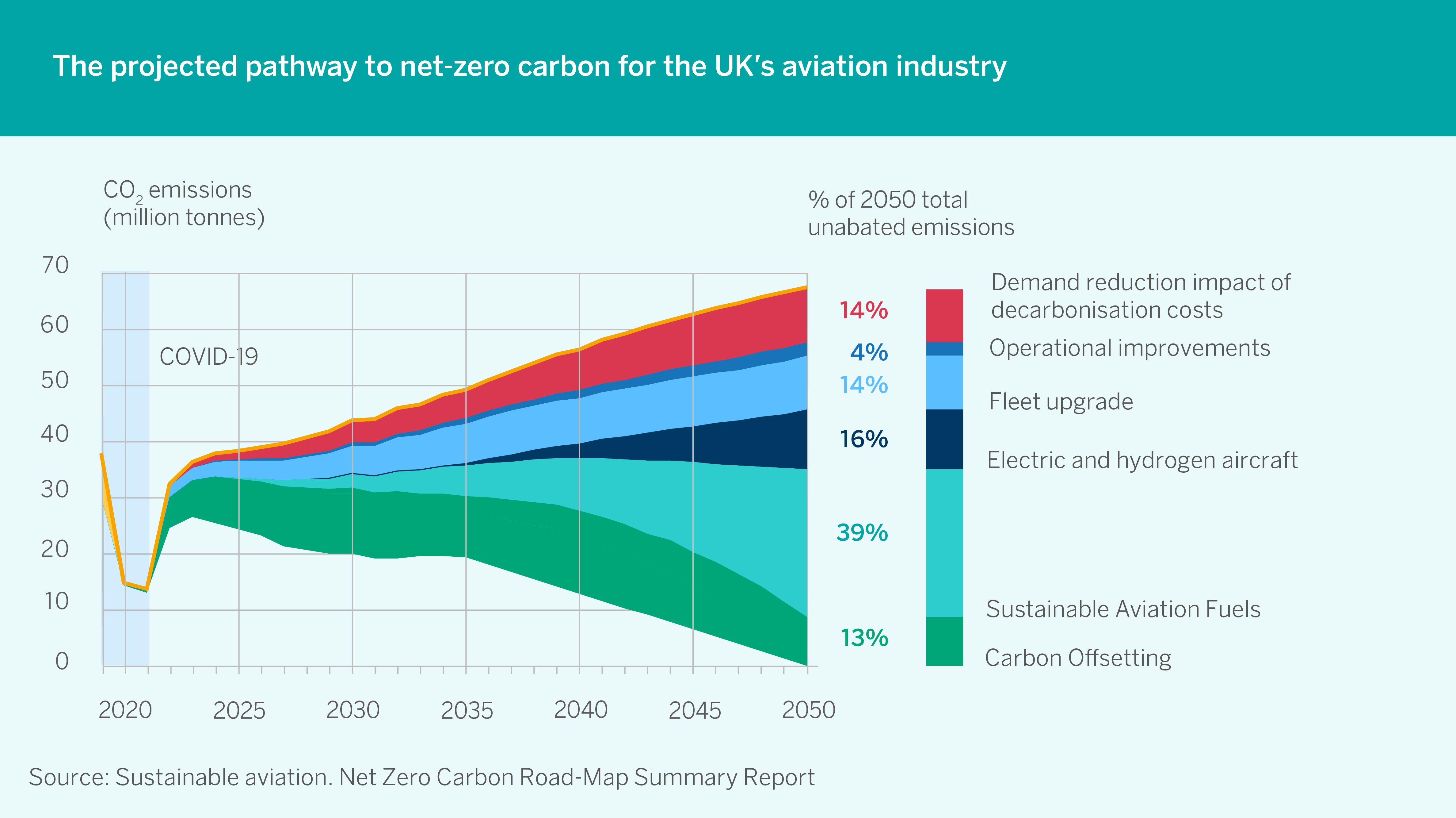
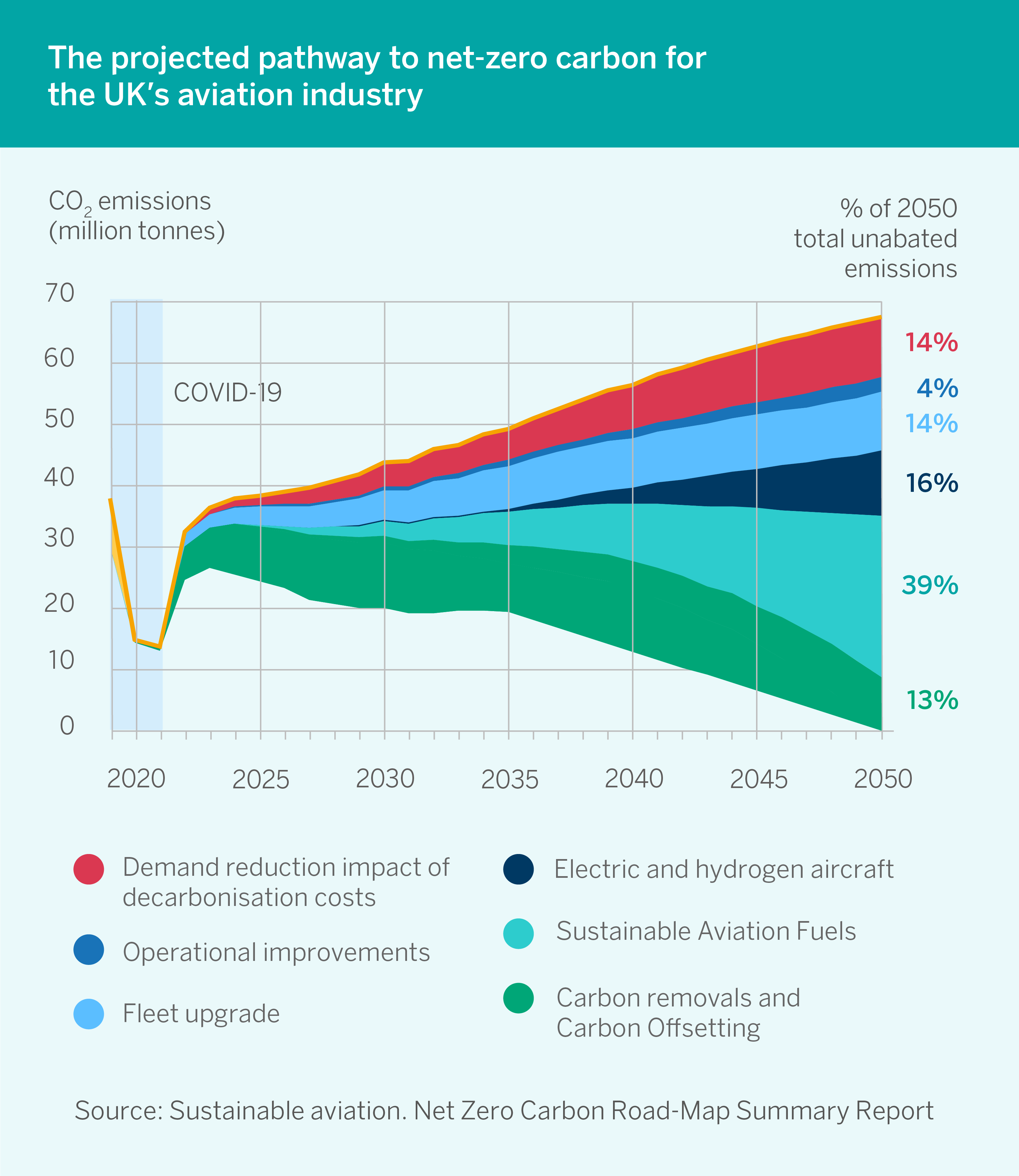
Meanwhile, shipping accounts for approximately 90 percent of global trade and while it is one of the most efficient means of transportation in energy terms, it is a significant (and increasing) source of greenhouse gases.
The International Maritime Organization is the body in charge of developing and maintaining a comprehensive regulatory framework for shipping. In July 2023, it announced its decarbonization targets of reaching net zero emissions by 2050.
BBVA has calculated the percentage difference between the intensity of each financed ship and the decarbonization pathway set by the IMO for this type of ship in 2022. The alignment indicator in 2022 of BBVA’s financing portfolio stands at +6.8 percent with respect to the pathway set by the IMO. BBVA’s goal for 2030 is to be at a 0 percent difference from the pathway set by the IMO for that year.
Reducing the emissions of shipping is no easy task due to the useful life of the assets, high energy dependence and the limited drivers available to shipping companies. The sector is taking the initiative and has leaders in the industry who are laying out ambitious plans that entail renewing the current fleet in order to have zero-emission ships by 2050.
In order to succeed, a coordinated effort is essential to accelerate the development of technologies for fuels without carbon emissions and to involve the sector’s entire value chain—from shipowners and fuel producers to port and terminal operators who must provide the necessary infrastructure.
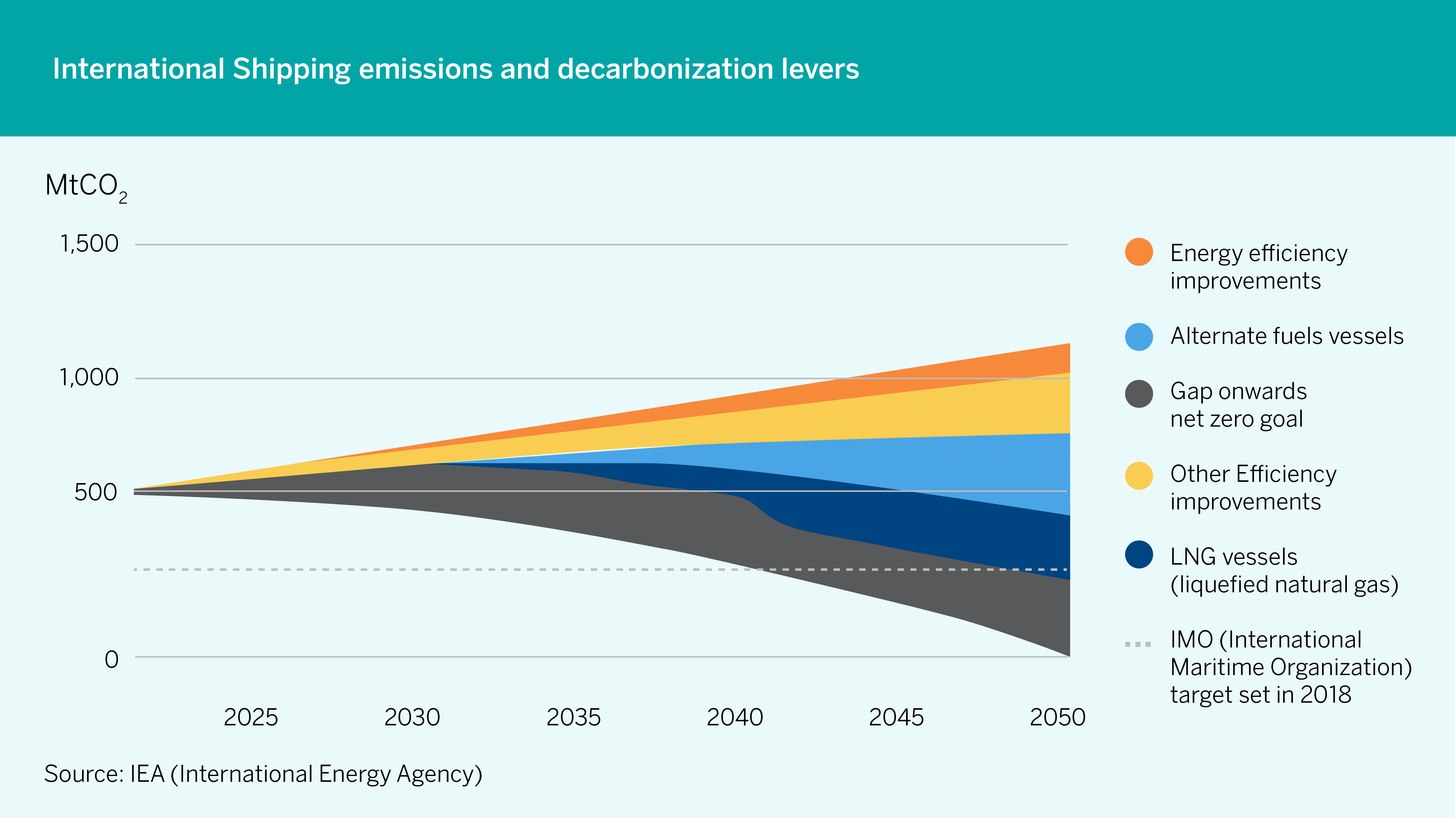
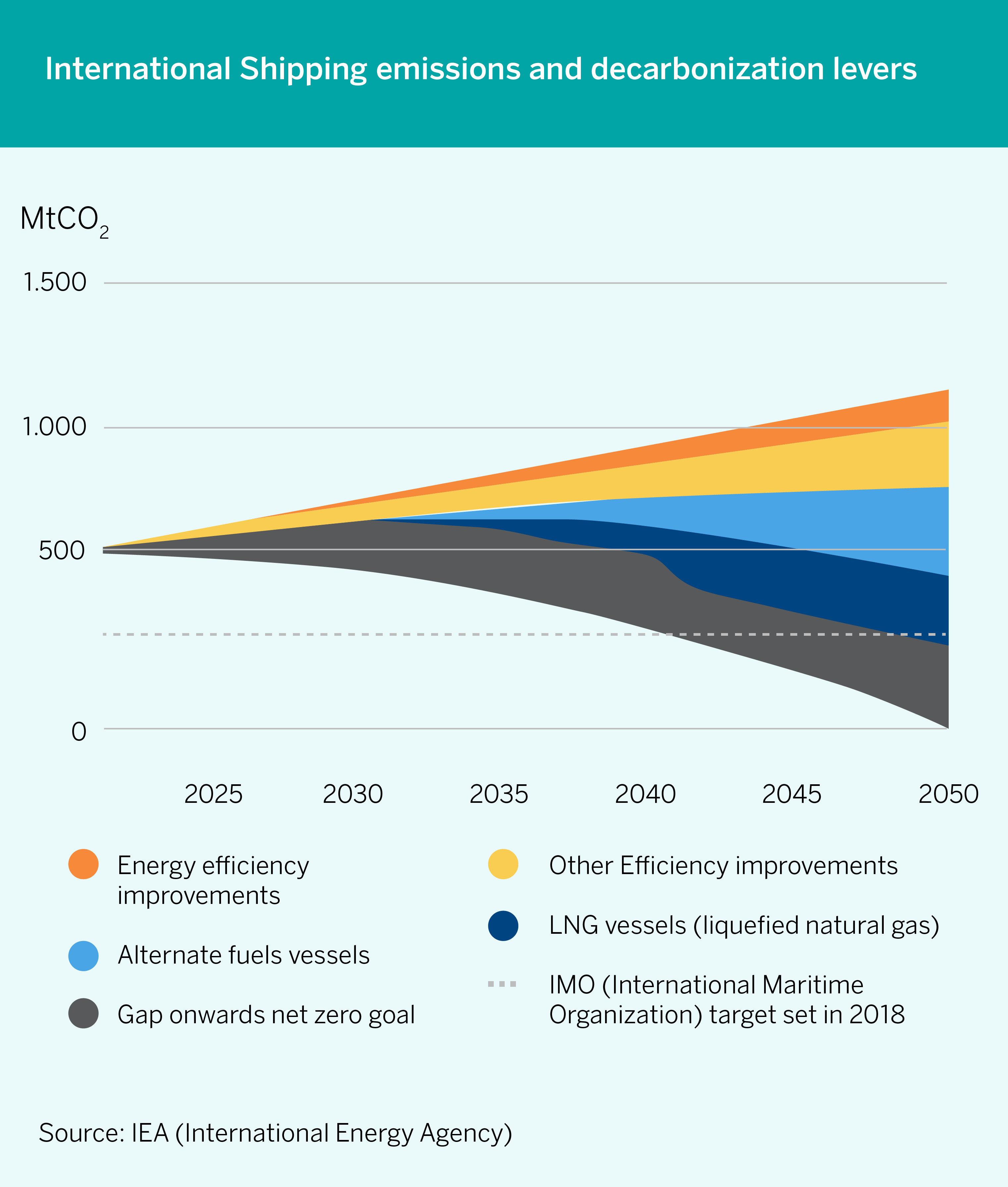
Advances in client decarbonization
BBVA is part of the Net Zero Banking Alliance (NZBA). Banks in this international alliance have pledged to ensure that their loan and investment portfolios are neutral in net greenhouse gas emissions by 2050. Joining this alliance means publishing interim targets for 2030 for the most emissions-intensive sectors, to be achieved progressively.
In April 2023, BBVA published its clients’ progress toward decarbonization in the first version of its climate transition plan. Emissions had been reduced in all sectors with established decarbonization indicators.
In addition, BBVA has sector plans to provide guidance for the alignment of its portfolio and sales strategy. These plans encompass risk considerations, evaluate clients’ transition plans with proactive advice and capture business opportunities that will ultimately allow us to accomplish our objectives.
¹European Aviation Environmental Report 2022 by the European Union Aviation Safety Agency (EASA)
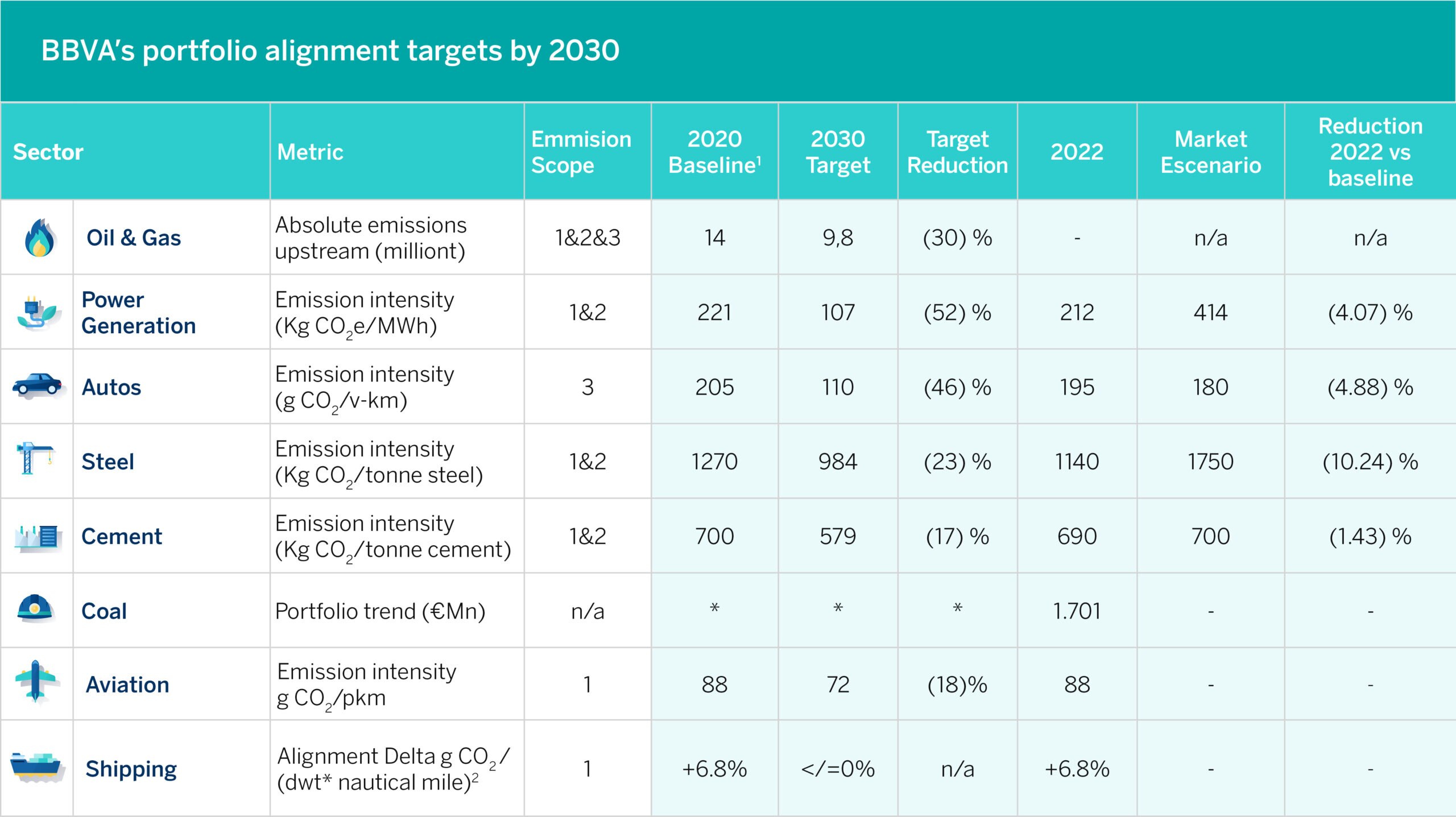
¹Oil & Gas baseline year 2021. Aviation and Shipping baseline year 2022.
²Positive alignment score means misaligned (above the decarbonization trajectory). Negative or zero score means aligned.
*Phase-out plan 2030 in developed countries and 2040 in the rest of the geographies, under the terms provided in the BBVA Environmental and Social Framework.
Note: The achievement and progress of decarbonization targets will depend to a large extent on the actions of third parties, such as clients, governments and other stakeholders, and may therefore be materially affected by such actions, or lack thereof, as well as by other exogenous factors that do not depend on BBVA (including, but not limited to, new technological developments, regulatory developments, military conflicts, the evolution of climate and energy crises, etc.). Therefore, these targets may be subject to future revisions.